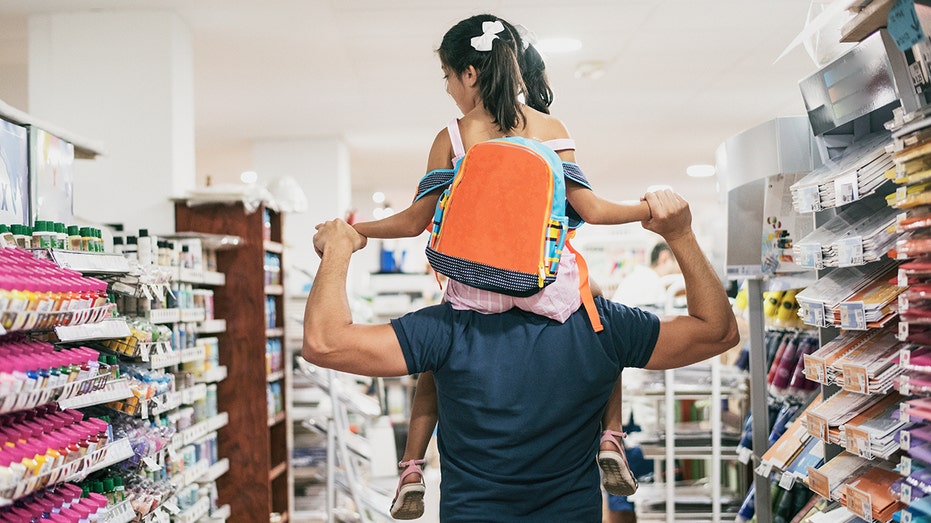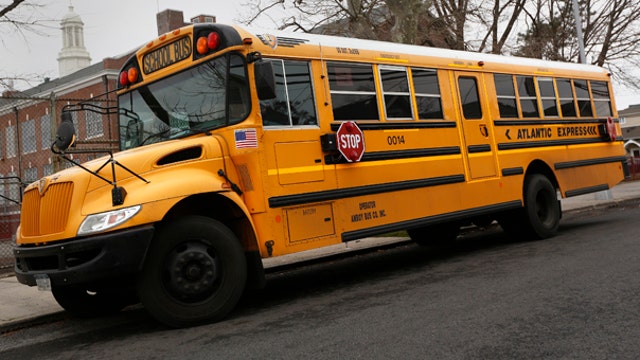Inflation has shoppers fearing back-to-school items will strain budgets
Back-to-school expenses are even more jarring for middle-income households this year
Shoppers getting squeezed by inflation are worried back-to-school shopping will further strain their already tight budgets, according to a recent Bankrate report.
This fear is pushing most consumers, specifically middle-income households, to rely on money-saving tactics to offset these costs, according to a Bankrate survey of over 2,400 U.S. adults.
Of those surveyed, 41% revealed that inflation, which climbed 8.5% in July, will change the way they shop for the 2022-2023 school year. Nearly all of these shoppers — about 95% — are employing money-saving strategies.
This year, families with children in elementary through high school will spend an estimated average of $864 on school items, according to the National Retail Federation.
BACK-TO-SCHOOL RETAIL SPENDING EXPECTED TO GROW 7.5% WITH DEPARTMENT STORES MAKING A COMEBACK

A father and daughter buying school supplies. (iStock / iStock)
On average, this is $168 more than what shoppers spent three years ago.
Of the people in the Bankrate survey that said inflation would likely change how they shop, nearly 40% said back-to-school shopping would strain their budgets. A quarter of them said they are less likely to have money set aside for back-to-school purchases, and 30% of these shoppers said they will feel pressured to spend more than they typically do.
PARENTS AND TEACHERS SEEK OUT RETAILER BACK-TO-SCHOOL SALES AMID HIGH INFLATION
Since back-to-school items are essential, more than half of those who say inflation will change their shopping habits will search for coupons, sales or other discounts. Forty-five percent of these shoppers expect to buy fewer items and 43% will buy cheaper brands.
Nearly 40% of these shoppers will stick to stores where they have loyalty accounts or store-specific credit cards. Many money-conscious shoppers are also looking to buy more used and secondhand items, delay their purchases or use credit card rewards to offset costs.
The back-to-school shopping burden has been most jarring for middle-income households earning between $50,000-$99,999 annually, Bankrate senior industry analyst Ted Rossman told FOX Business.
"Lower-income households have been struggling with back-to-school expenses and other financial issues for a while. It’s harder because of inflation, but it’s a trend they’re familiar with, unfortunately," Rossman said.
However, middle-income households are getting squeezed financially like never before as costs rise across the board. These increases — from gas and groceries to mortgage rates and rent — make back-to-school shopping "especially uncomfortable for many this year," Rossman added.
BACK TO SCHOOL 2022: TAX-FREE SALES BY STATE
The data showed that middle-income households are more likely to get more used or secondhand items, reuse old items and even seek out more coupons, discounts or sales compared to lower and higher-income households.
Shoppers heavily leaning on credit cards, though, should be cautious due to rising interest rates, Rossman added.

Back-to-school supplies await shoppers at a store in Marlborough, Mass. (AP / AP Newsroom)
According to Bankrate, credit cards are already charging an average of 17.42%. Soon, credit card interest rates could eclipse the all-time record of 17.87%.
CLICK HERE TO READ MORE ON FOX BUSINESS
The problem is credit card debt is very expensive.
For instance, if a consumer puts $1,000 in back-to-school expenses on a credit card and only makes the minimum payments at 17.42%, the consumer will be in debt for about three years and will incur about $300 in interest charges, according to Rossman.
According to TransUnion, the average credit card balance is already $5,270.






















